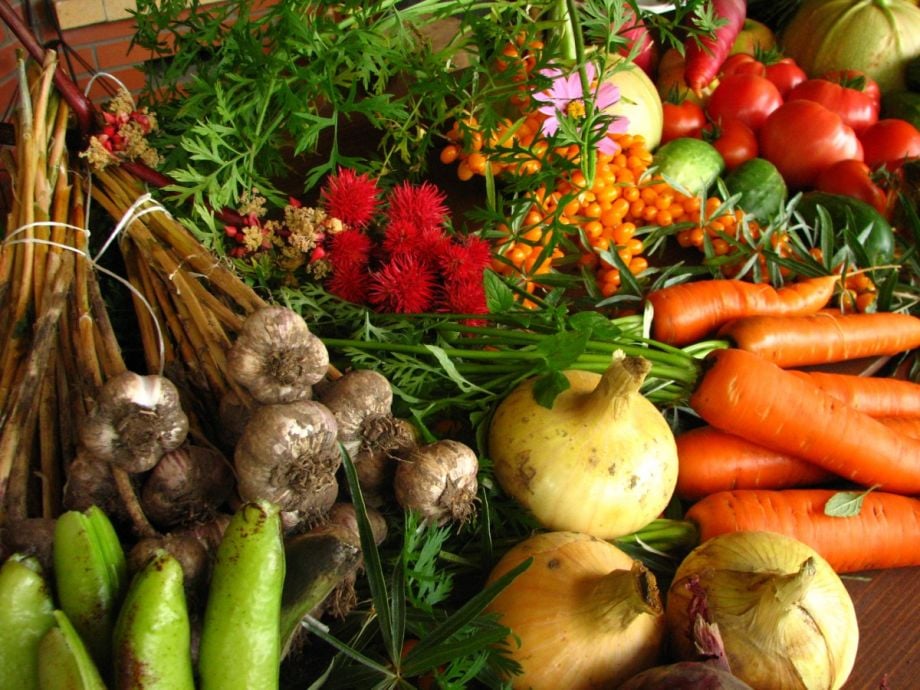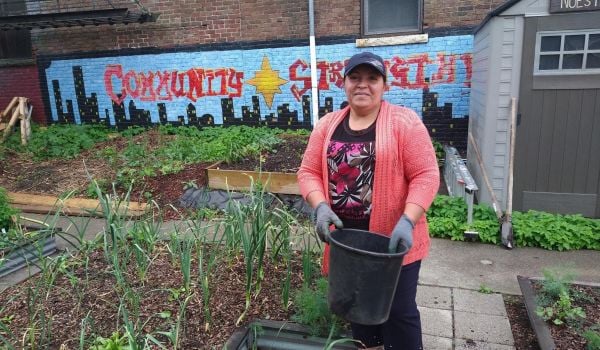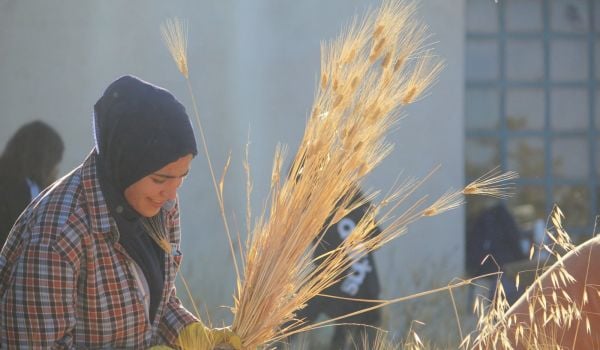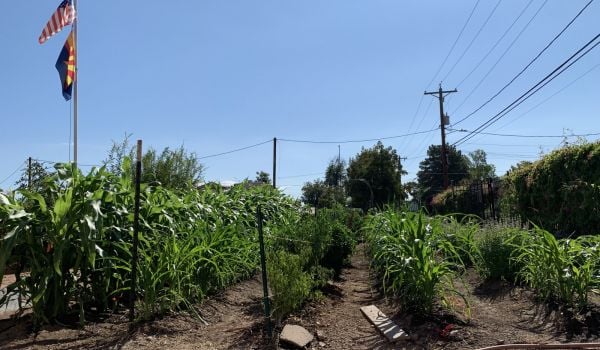In 2010, Mara Gittleman needed to prove that New York City’s network of community gardens — half a thousand plots growing everything from eggplant to strawberries — weren’t vacant lots.
“In New York City, community gardens don’t have any land tenure or protection,” Gittleman says. “So if someone wants to use that land they can, even if [the garden] has been there for 40 years.”
Former Mayor Rudy Giuliani had agreed to auction off 115 those “plots” for development in 1999. After three years of resistance from gardeners, the state’s attorney general signed an agreement protecting many of the neighborhood mini-farms in 2002. Eight years later, that agreement was about to expire.
As director of Farming Concrete, an organization that helps small-scale gardeners and urban farmers measure their produce, Gittleman wanted to quantify the value of those gardens for the city to see — not in abstract terms but in pounds of chard and sweet pepper. They began a data collection process involving kitchen scales, harvest logs and citizen science, and by the end of 2010, the organization was able to demonstrate that a sample of 67 gardens had grown 39,518 plants and 87,690 pounds of produce (including a whopping 7,150 pounds of tomatoes) with an estimated harvest value of $214,060.
In 2014, Farming Concrete and the Design Trust for Public Space released the Five Borough Farm Data Collection Toolkit, which Next City covered here. Last month the partnership released a new database: The Farming Concrete Data Collection Toolkit helps growers around the world to track their crops, along with other previously unquantified yields: pounds of compost diverted from landfills, market sales and even certain health benefits.
The point, Gittleman explains, is to allow urban growers to speak the same language as city officials: data. That data could help them advocate for more favorable policies, like a zoning designation that differentiates between community gardens and vacant lots. Susan Chin, executive director of the Design Trust, says that it could also be a useful tool for demonstrating infrastructure benefits to city leaders and worth to potential funders.
“Urban agriculture crosses so many boundaries,” she says, adding that according to the database, which has collected information from nearly 300 urban farms and community gardens so far, 200,000 pounds of waste have been diverted from local landfills and 68,300 gallons of rainwater have been harvested. Those numbers could be taken to sanitation and sewage treatment departments concerned with concentrated methane or overflowing gutters.
Like Farming Concrete’s 2010 project, the new toolkit requires a substantial amount of work from its users. As a series of instructional videos demonstrates, gardeners can track crop yields by measuring raised beds, counting plants, keeping a harvest log and weighing produce. They can keep tabs on “environmental benefits” by regularly weighing compost on a bathroom scale, and measure how many people from the local neighborhood or borough are participating in various tasks by keeping a homemade grid. And they can measure health benefits by taking informal surveys. All of that information is then uploaded to the database, which allows front-end searches according to state, city, “method” (i.e., “landfill waste diversion by volume”) or farm.
The tool’s emphasis on DIY data-gathering begs the question of whether any but the most devoted will use it — particularly because many community gardens are maintained by volunteers with a only few leaders.
But Chin points out that gardeners in 43 cities are already using it.
“A lot of the farmers and gardeners who are participating had been collecting data prior to this tool,” she says. “We’re just refining the work that they do.”
“No one is doing all 20 metrics,” says Gittleman, referring to the wide array of datasets the tool can record. “This just came out of different meetings and workshops we had with folks to hear not only ‘What are they collecting?’ but ‘What do they want to know?‘”
The database isn’t supposed to be a vast repository of, say, all the snap-peas grown in every city in 2016. It’s supposed to help gardeners with whatever organizing and fundraising needs they already have.
“It’s about letting community gardeners tell their own story,” Gittleman says. “Whatever they choose to do with that, whether it’s policy work, whether it’s fundraising work, whether it’s social justice work, this can help.”
The Works is made possible with the support of the Surdna Foundation.

Rachel Dovey is an award-winning freelance writer and former USC Annenberg fellow living at the northern tip of California’s Bay Area. She writes about infrastructure, water and climate change and has been published by Bust, Wired, Paste, SF Weekly, the East Bay Express and the North Bay Bohemian
Follow Rachel .(JavaScript must be enabled to view this email address)







_600_350_80_s_c1.jpeg)









